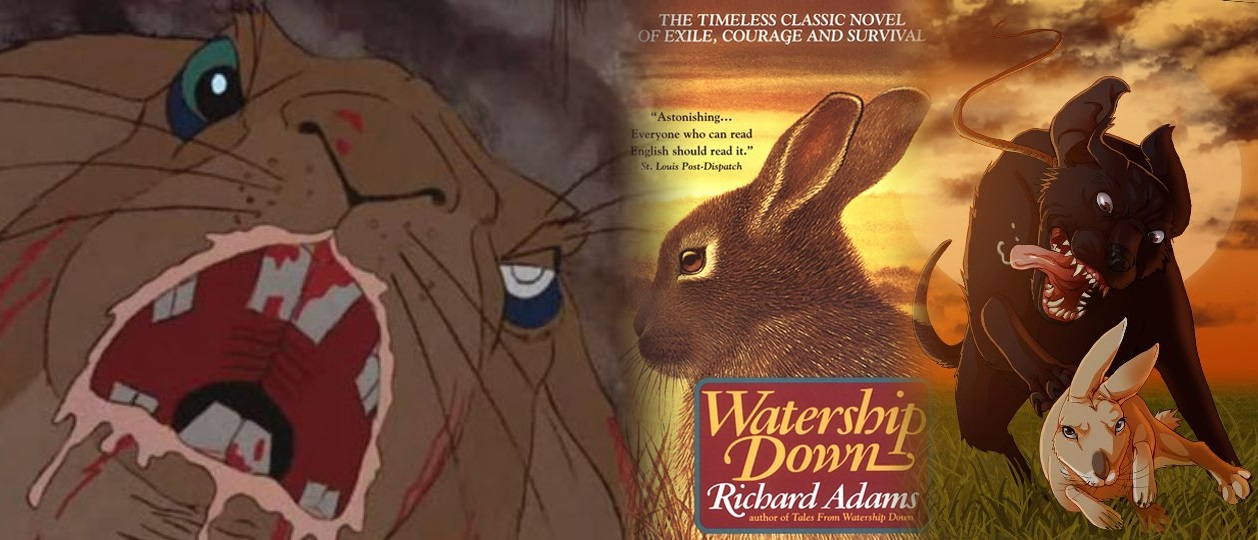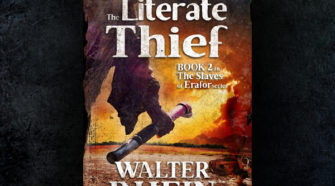In the evenings, I like to spend an hour or so reading to my 4 and 6 year old daughters. We’ve gone through a pretty solid selection of works so far, and I expect the trend to continue because it’s the best part of the day. I’ve been impressed by the complexity of stories which they seem to be able to follow. It occurs to me that it’s good for them to learn to listen to lectures with unfamiliar vocabulary in a low pressure situation since they’re going to have to do a lot of that when they get to school.
Recently I selected Watership Down by Richard Adams because it’s about rabbits and I thought that would appeal to my girls. I’m quite familiar with this story and knew it to be brutal, but they’ve enjoyed some pretty difficult stories in the past.
Normally when I read a book to the girls, we find the movie to watch after and compare notes. However, the film version of Watership Down is decidedly not for children. (I’ve embedded a version from Youtube below, skip to the end if you want to see a brutal rabbit slaughter):
Actually, my first experience with this story came when somebody, probably my idiot aunt, put a bunch of us kids together in a room to watch the 1978 film version of Watership Down, and didn’t bother to check back in on us until the brutal end. To this day, the first few scenes of that movie scare me. There is a very tangible sense of some impending doom hovering over every scene. When I read the book as a teenager for the first time, it was partly to face the lingering childhood fear of having seen the movie.
It’s too bad the movie is so psychotic because Watership Down really is a very effective story. It’s interesting to read the history of this book. Richard Adams submitted it to several places where it was rejected before finally finding a small publisher. The publisher didn’t offer him an advance, but they were able to get the book widely reviewed.
When reading the novel, you wonder how it could have possibly been rejected. At the same time, it’s fairly obvious that a lot of the writing would have been cut out if a more mainstream editor had been put in charge of the project. The writing is very good, but it has that very British habit of going into absurd detail. Every time the rabbits hike through the foliage you get to hear about the ten different types of plants they stomp over. A lot of this stuff just struck me as “filler” and you found myself skimming to the dialogue sections towards the end.
My girls only lasted for two thirds of the book before they had a rebellion and forced me to switch over to the Enchanted Forest Chronicles by Patricia Wrede (which are absolutely terrible). So I read the last few chapters to myself rather than out loud.
Watership Down is the story of a small group of rabbits who leave their warren to find a new place to live. The story is of their travels, the dangers they face, and how they come together as a group. One of the rabbits, Fiver, has extrasensory perception, and I think this is the character that elevates this book from the level of curiosity to something fairly impressive. Fiver is the one who perceives a danger to the rabbits first warren, although they weren’t particularly happy there anyway, and his insight helps guide the leader, Hazel, along the way.
There are some very interesting moments where Hazel listens to Fiver’s advice even though the other rabbits under his charge are skeptical of the information. Adams does a good job of conveying the strain of leadership. Hazel is aware when he takes a risk that threatens his ability to be called the leader, but he’s also aware the consequences will be more catastrophic if he fails to make the right decision.
The novel clips along at a fairly good pace and goes through several transformative phases. Early on, Hazel is finding his way as the leader and growing into the role. Initially the group of refugee rabbits doesn’t even officially elect a leader, but Hazel eventually achieves the position through merit.
Once leadership is established, the decisions come a little easier and the rabbits settle into an area they can call their home and even begin to prosper. At that point, Hazel and the others decide to approach another warren with the hope of acquiring some does in order to ensure their survival.
The lack of female characters in Watership Down is probably at least part of the reason why my girls lost interest in the story. This was interesting to me because I’ve heard the complaint of “a lack of female characters” which is often applied more as a knee-jerk reaction than as a matter of real literary criticism. But at the mention of “acquiring does” my girls showed immediate interest. “Finally there will be some girls!” they said. Perhaps it would have made sense for Adams to have included a female character to leave with the rabbit group from the beginning, however, the whole second half of the novel does pivot on the fact that the refugee group doesn’t have any does, so maybe that would have been impractical (a barren doe could have come with them perhaps?). Fiver could have perhaps been female, but then the novel would have been somewhat cliché in its treatment of female characters. I think it’s a better choice to have Fiver as male, it makes his vulnerability at bit more painful.
Watership Down goes from Travel Novel, to Coming of Age novel, to terrible Dystopia. The last third of the book deals with the refugee rabbits interaction with the warren Efrafra which is ruled over by the terrible General Woundwort. In Efrafra, the rabbits are subjugated and oppressed, and, this being the animal kingdom, Adams doesn’t pull his punches. At one point Hazel makes casual mention of doe rabbits “eating their young” (I didn’t get that far when reading to my girls). If I remember correctly, Roald Dahl once wrote a short story featuring a mother rabbit eating her young.
Hazel eventually prevails using a series of tricks that are plausible within the rules that Adams created for his world. When you finish the novel, you can’t help but admire the author. Despite essentially being a heroic fantasy novel of a battle between kingdoms, Adams manages to create a fiction that is beautifully fantastical yet fundamentally real. After all, you can go for a walk in the park near your house and find a rabbit warren. The sense that the story you’re reading might be “a real history” is what lends significant gravitas to any work. A sense of the real is imperative to weaving the veil of disbelief. On this level, Watership Down works extremely well.
Possibly an editor with a sharper pen might have deleted all of the “Tales of El-Ahrairah” sections. Those do a good job in establishing the mythology of the rabbit world, and give opportunity for the slivers of lupine (rabbit language) that also effectively add to the illusion, but they aren’t vital to the narrative and start to weigh the story down at the end. Honestly, I prefer that they are included, as the manuscript is preserved as more of the author’s vision than a completely sleek unit ready for mass distribution. I can’t help but wonder if perhaps some of the success of this novel might be attributed to its flaws? After all, the flaws sometimes make a work more human, which is why I gravitate to publishers who exercise a light editor’s touch.
It strikes me that Watership Down would be a great novel for a high school class. It’s a bit on the long side, but perhaps the teacher could cut out the “El-Ahrairah” chapters (or make them optional or extra credit). I’m curious as to why I’ve never heard this book suggested for a high school class. I still wouldn’t recommend the movie however.
What are your thoughts on Watership Down? Please leave them in the comments below.






No Comment